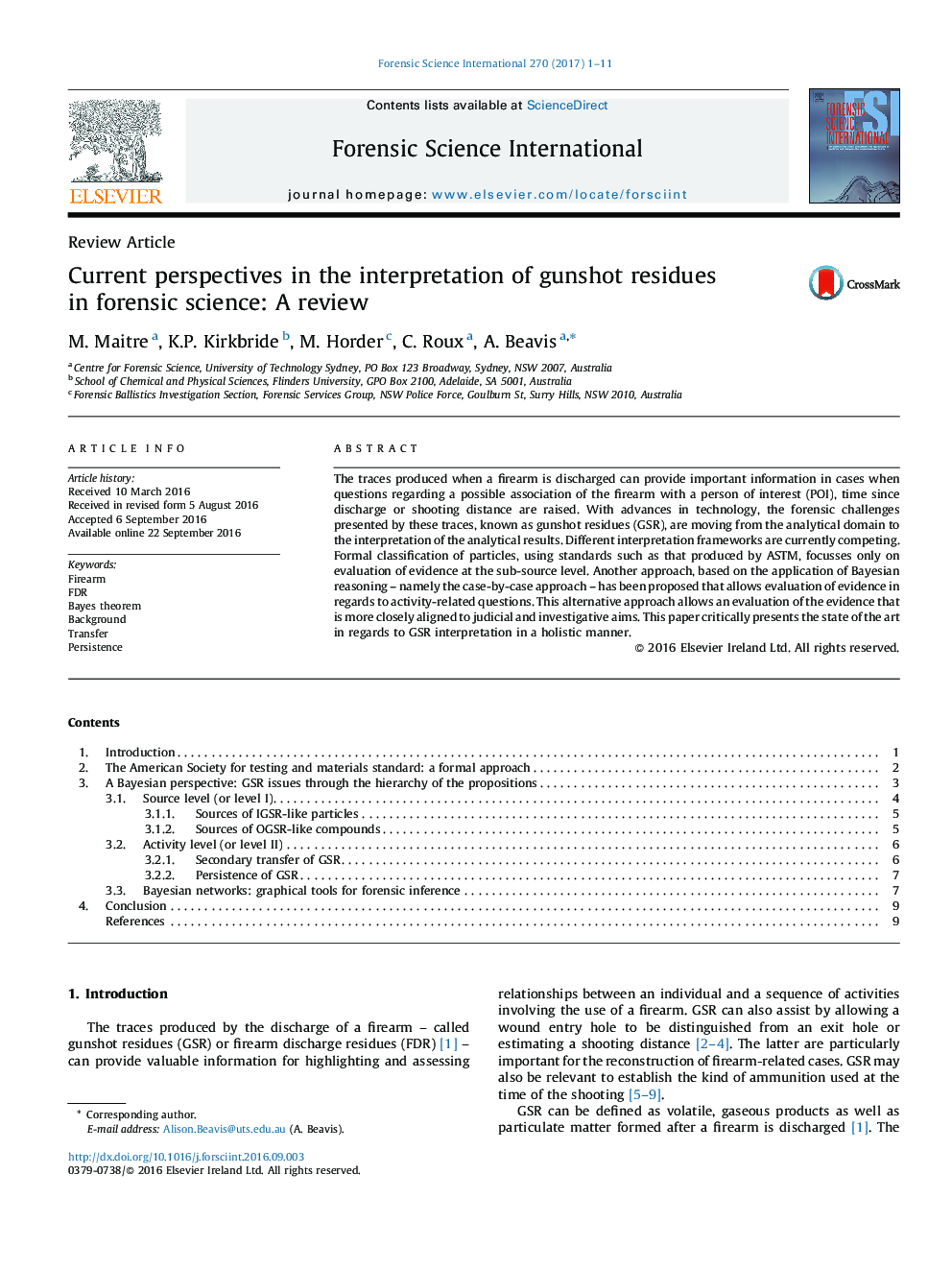| Article ID | Journal | Published Year | Pages | File Type |
|---|---|---|---|---|
| 6462517 | Forensic Science International | 2017 | 11 Pages |
â¢The challenges associated with GSR are moving from analysis to interpretation.â¢Bayesian reasoning could allow for evaluation of evidence in regards to activity.â¢This will allow for an evaluation that is aligned to judicial and investigative aims.
The traces produced when a firearm is discharged can provide important information in cases when questions regarding a possible association of the firearm with a person of interest (POI), time since discharge or shooting distance are raised. With advances in technology, the forensic challenges presented by these traces, known as gunshot residues (GSR), are moving from the analytical domain to the interpretation of the analytical results. Different interpretation frameworks are currently competing. Formal classification of particles, using standards such as that produced by ASTM, focusses only on evaluation of evidence at the sub-source level. Another approach, based on the application of Bayesian reasoning - namely the case-by-case approach - has been proposed that allows evaluation of evidence in regards to activity-related questions. This alternative approach allows an evaluation of the evidence that is more closely aligned to judicial and investigative aims. This paper critically presents the state of the art in regards to GSR interpretation in a holistic manner.
